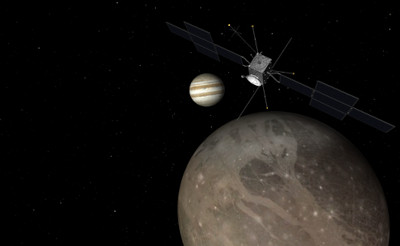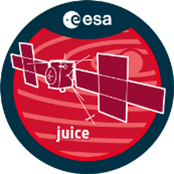Start of a new collaboration with the European Space Agency
In space, the thermal control of a spacecraft is highly dependent on the thermal-optical properties of materials, i.e. on the surface´s ability to emit/absorb thermal radiation at selected temperatures.
Scientists from the Cryogenics and superconductivity group at the Institute of Scientific Instruments of the Czech Academy of Sciences in Brno (ISI Brno) have in their laboratory tested the thermal emissivity of a high performance coating for the needs of the European Space Research and Technology Centre (ESTEC). ESTEC, situated in Noordwijk (Netherlands), is the European Space Agency's main technology development and test centre for spacecraft and space technology.

The JUICE spacecraft inside the ESTEC European Test Service cleanroom
The coating will be used as a part of the thermal control system of the planned JUpiter ICy moons Explorer (JUICE) Spacecraft. JUICE is an interplanetary spacecraft, that will spend about four years making detailed observations of the giant gaseous planet Jupiter and three of its largest moons, Ganymede, Callisto and Europa, trying to answer to everlasting questions like “what are the conditions for planet formation?”, “are there conditions to sustain life?” (for more information visit the JUICE website and Twitter).
“It was a pleasure to work with the competent team of ISI Brno; their unique results are supporting the success of the challenging interplanetary JUICE mission”. Quote from B.Bras, M.Portaluppi - M&P of Materials’ Physics & Chemistry Section TEC-QEE at ESTEC.

Artist's impression of the JUICE spacecraft orbiting one of the Jupiter's Galilean moons
For the purpose of the mission the total hemispherical emissivity in the temperature range 15 K – 300 K (-258°C to 27°C) of the thermal control coatings with different thicknesses was measured. These measurements were possible thanks to a dedicated cryogenic apparatus, designed and developed earlier at ISI Brno.

Opened measurement chamber of the cryogenic apparatus used for the coating characterisation
The method takes advantage of cooling in commercial liquid helium Dewars and enables measurements in wide ranges of temperatures (from 10 K up to 320 K) and emissivity values (from 0.1% to 99%). Nowadays, the collaboration with ESTEC TEC-QEE continues by testing another set of samples, such materials will be used for the current and future key missions of the European space sector.
Photos courtesy of ESA and ISI Brno.













